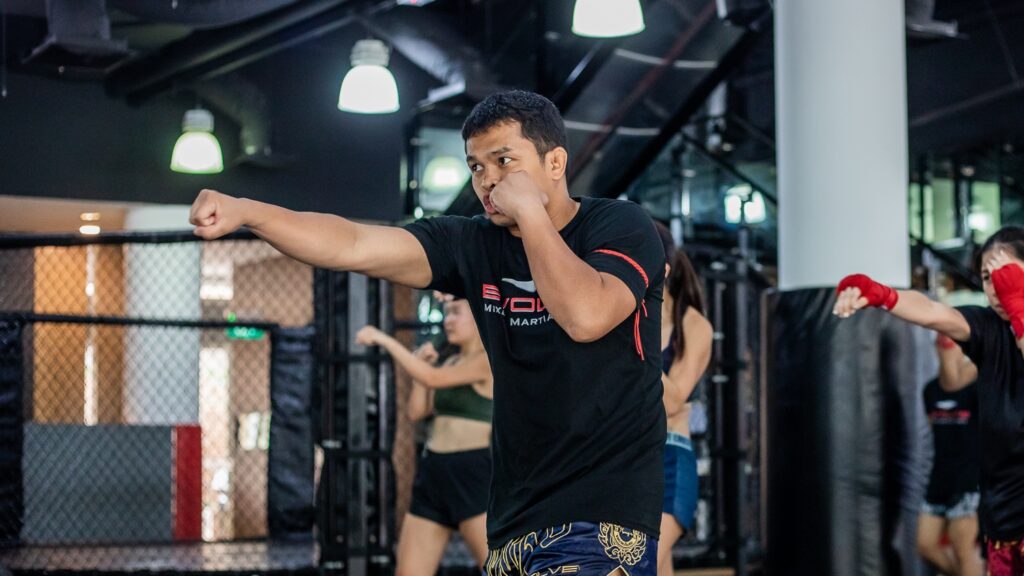Muscle fatigue is a phenomenon familiar to athletes, fitness enthusiasts, and anyone who engages in physical activities like martial arts training. It’s the decline in the ability of a muscle to generate force, often experienced during or after strenuous workouts.
Understanding muscle fatigue and how to recover from it is crucial for anyone looking to improve their physical performance and overall health.
Important Things You Should Know About Muscle Fatigue
Muscle fatigue can be described as the feeling of weakness or exhaustion in your muscles during or after physical activity. It’s a natural response of the body to prolonged exertion and is characterized by a noticeable decrease in the power output of muscles.
Physiological Causes Of Muscle Fatigue
Some of the factors that contribute to muscle fatigue:
- Energy Depletion: Muscles require energy sources, like adenosine triphosphate (ATP), to function. These energy stores deplete during prolonged or intense exercise, leading to fatigue.
- Accumulation Of Metabolic Byproducts: Exercise, especially intense anaerobic workouts, leads to the buildup of metabolic byproducts like lactic acid in muscles, contributing to fatigue.
- Electrolyte Imbalance: Electrolytes, crucial for muscle contractions, can become imbalanced during exercise, impacting muscle function.
- Central Fatigue: This involves the nervous system, where the brain reduces the output signals to muscles, often as a protective mechanism.
Symptoms Of Muscle Fatigue
Common symptoms include a noticeable decrease in muscular performance, prolonged muscle soreness, twitching, and a feeling of heaviness in the affected muscles. If ignored, muscle fatigue can lead to overtraining syndrome, resulting in extended periods of recovery and an increased risk of injury.
Recovery Strategies
Some of the simple things you can do to recover after your workouts and reduce muscle fatigue include:
1) Rest And Sleep
Rest is crucial. Your muscles need time to repair and rebuild after workouts. Sleep is essential as it’s when most of the muscle repair and growth in the body occurs. Adults should aim for 7-9 hours of sleep per night.
2) Nutrition And Hydration
Post-exercise, your body needs nutrients to repair muscle tissues and replenish energy stores:
- Protein: Consuming protein after a workout aids in muscle repair. Foods like chicken, fish, eggs, dairy, and plant-based options like tofu and lentils are excellent sources.
- Carbohydrates: They replenish glycogen stores. Whole grains, fruits, and vegetables are good options.
- Hydration: Replenishing fluids lost through sweat is crucial. Water is generally sufficient for most activities, but for prolonged exercise, sports drinks can help replace lost electrolytes.
3) Active Recovery
Low-intensity exercise, like walking or light cycling, can help in removing metabolic byproducts from the muscles and improve circulation, aiding the recovery process.
Active recovery is an effective strategy for reducing muscle fatigue and enhancing the overall recovery process after intense physical activity. Unlike passive recovery, which involves complete rest, active recovery entails engaging in low-intensity, low-impact exercises. This method helps maintain blood flow to the muscles and can expedite the process of recovery by alleviating muscle stiffness and promoting the removal of metabolic byproducts.
4) Stretching And Mobility Work
Gentle stretching after a workout can alleviate muscle tightness and improve flexibility. It also enhances blood circulation to the muscles, promoting recovery.
Stretching increases blood flow to your muscles, providing a greater supply of oxygen and nutrients. This improved circulation can speed up recovery and decrease recovery time after a workout. Moreover, the act of stretching can be a powerful stress reliever. Focusing on the act of stretching and maintaining deep, regular breaths can have a calming effect on the mind, reducing the symptoms of stress and anxiety.
5) Massage And Foam Rolling
Massage and foam rolling can alleviate muscle soreness and tightness, improving flexibility and aiding recovery. These techniques help in breaking down knots in muscles and enhancing blood flow.
Massages and foam rolling are invaluable tools for muscle recovery, widely favored by athletes and fitness enthusiasts alike. Both methods are rooted in myofascial release, a technique that targets the connective tissue surrounding muscles, enhancing flexibility and relieving pain. Massage therapy, administered by a professional, involves various techniques like kneading, tapping, and stroking, which help in reducing muscle tension and promoting relaxation.
6) Cold Therapy
Cold therapy, such as ice baths or cold showers, can reduce inflammation and muscle soreness. Incorporating cryotherapy into your routine thoughtfully can contribute to enhanced recovery and a positive impact on your overall health.
7) Heat Therapy
Heat therapy, like a warm bath or a sauna, can relax tight muscles and improve blood flow, aiding in recovery.
8) Proper Technique And Training Regimen

Ensuring proper technique during workouts and a well-planned training regimen can prevent excessive muscle fatigue. It’s crucial to gradually increase the intensity and volume of workouts to allow your body to adapt.
9) Supplementation
Certain supplements, like branched-chain amino acids (BCAAs), creatine, and omega-3 fatty acids, can support muscle recovery. However, it’s best to consult a healthcare professional before starting any supplementation.
10) Stress Management
High stress can impede recovery by affecting sleep and hormonal balance. Practices like meditation, yoga, and deep breathing exercises can help manage stress levels.
Preventing Muscle Fatigue

While recovery is important, preventing excessive muscle fatigue is equally crucial:
- Gradual Progression In Training: Increase the intensity and duration of your workouts gradually. Trying to do too much leaves you vulnerable to excessive muscle fatigue. Stick to one set of each exercise if you haven’t worked out in a while and build up from there.
- Adequate Warm-Up: Proper warm-up prepares your muscles and cardiovascular system for the upcoming exertion. Stretching can be an effective way to prepare your muscles for strenuous exercise, leading to less muscle fatigue afterward.
- Balanced Workout Plan: Incorporate a mix of strength training, cardio, and flexibility exercises in your routine.
- Listening To Your Body: Pay attention to signs of fatigue and adjust your training accordingly.
Working Smart Reduces Muscle Fatigue
Muscle fatigue is a natural response to physical exertion, but understanding its causes and implementing effective recovery strategies can significantly enhance your performance and physical well-being. By incorporating adequate rest, proper nutrition, hydration, and recovery techniques into your routine, you can effectively manage muscle fatigue.
Additionally, preventing excessive fatigue through proper training techniques and stress management is vital for long-term fitness and health. Remember, the key to overcoming muscle fatigue lies in a balanced approach to exercise, recovery, and overall wellness.
You may also like:
















